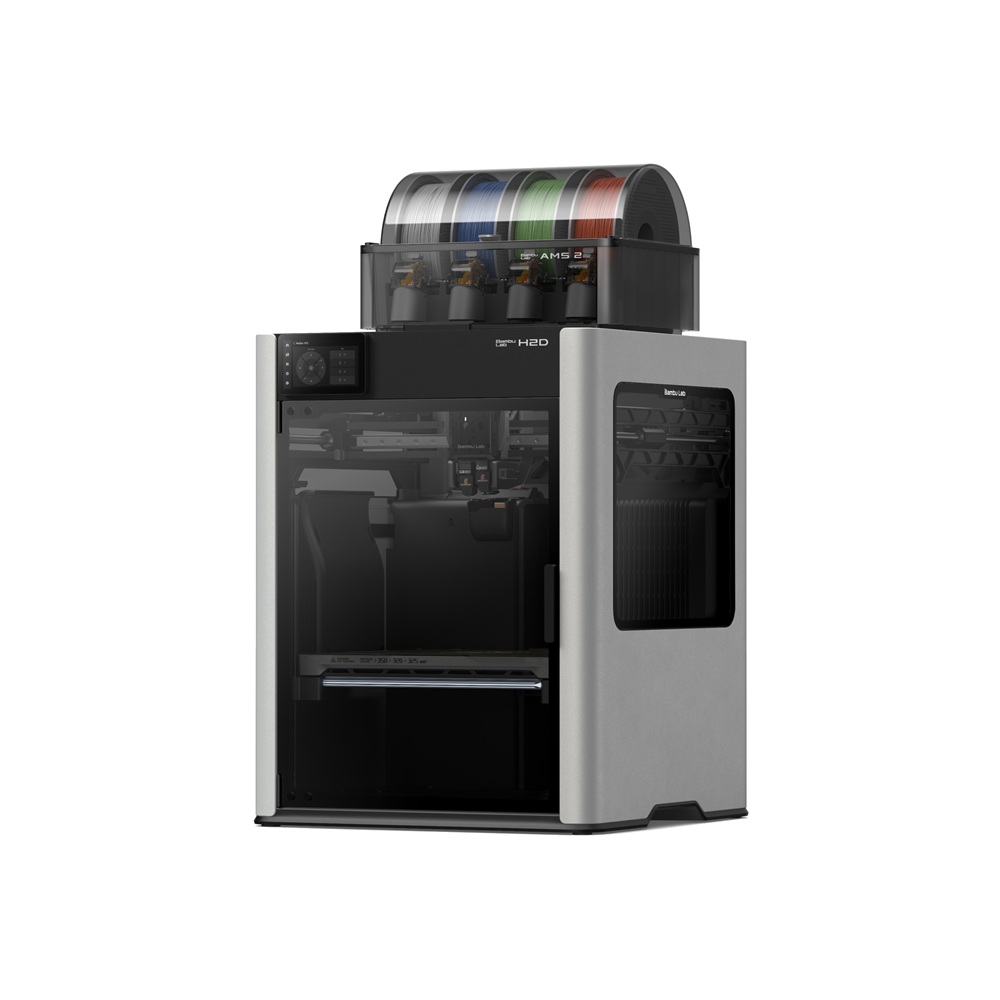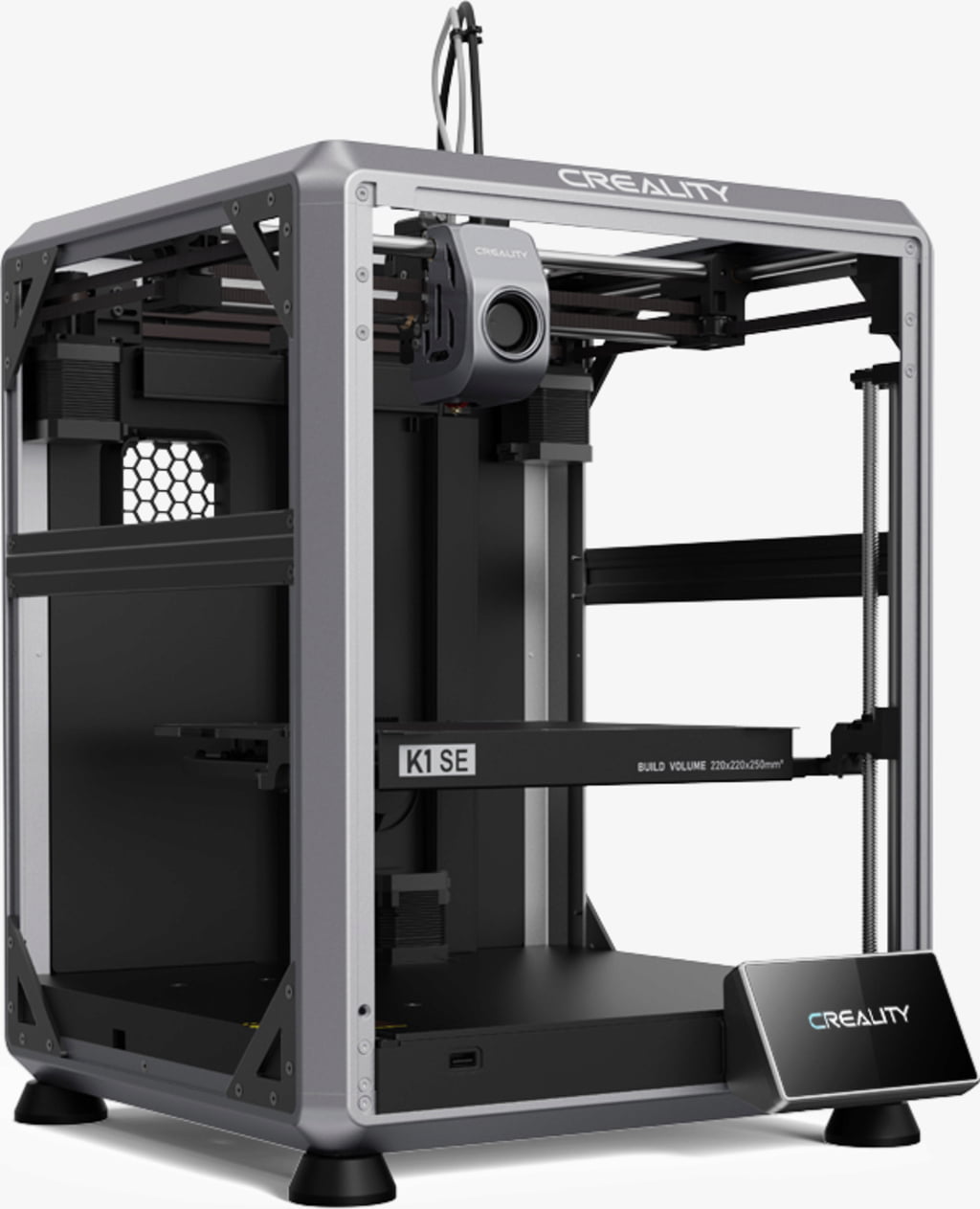Compare H2D vs K1 SE
Comparison between the best 3D printers
Choose the best 3D printer at the best price. The cheapest 3D printers are here.
Buy a 3D printer here with 3D Fila.
 |
 |
|
| Model | H2D |
K1 SE |
| Printing Material | Filament | Filament |
| Buy Filament for Bambu Lab H2D | Buy Filament forCreality 3D K1 SE | |
| Estimated price | $1899,00 | $349,00 |
| Manufacturer | Bambu Lab | Creality 3D |
| Release Year | 2025 | 2023 |
| Print Volume [mm] | 350x320x325 | 220x220x250 |
| Printer Size [mm] | 492x514x626 | 355x355x480 |
| Weight [kg] | 42,3 | 10,24 |
| Power Loss Recovery | YES | YES |
| Enclosed printer | YES | NO |
| Bed Leveling | Automatic | Automatic |
| Filament End Sensor | YES | YES |
| Bed type | Heated | Heated |
| Power supply system | Direct Drive | Direct Drive |
| Standard nozzle | 0,4 | 0,4 |
| Maximum Nozzle Temperature [°C] | 350 | 300 |
| Maximum Bed Temperature [°C] | 120 | 100 |
| Maximum printing speed [mm/s] | 600 | 600 |
| Filament holder | YES | YES |
| Camera for supervision | YES | YES |
| Recommended filaments | PLA, PETG, ABS, ASA, TPU, PVA, Nylon (PA) | Hyper PLA, PLA, PETG, PET, TPU |
| Recommended slicers | Bambu Studio | Creality Print; Cura, Simplify3D e PrusaSlicer |
| Maximum Resolution [mm] | 0,01 | 0,1 |
| Processor | ||
| Display | Touchscreen 5'' | Display touchscreen 4,3'' |
| Power Supply | 110/220V / 350W | |
| Connectivity | Wifi, Bambu bus, Cartão SD | Ethernet / USB / Wi-Fi |
| Operating systems | Windows, Mac, Linux | Windows, Mac, Linux |
| Date of registration in the system | 2025-03-31 | 2023-08-26 |
| Release date | 2025 | 2023 |
| Extra features | Bambu Labs H2D combines high-speed 3D printing with a chamber heated up to 65 °C, dual extrusion with automatic nozzle switching, an AMS for filament drying and exchange, and AI sensors that detect failures. It offers optional laser and digital cutting capabilities, features intelligent calibration through computer vision, vibration control, enhanced fire safety, and real-time camera monitoring. | The Creality K1 SE is a high-speed 3D printer with CoreXY system, capable of printing at up to 600mm/s with acceleration of 20000mm/s². It has a dual-gear extruder, easy-to-replace tri-metal nozzle, automatic leveling, and advanced features such as vibration reduction algorithms and intelligent operation. Its rigid cast aluminum frame ensures stability, while the open-source Klipper-based system offers freedom for customization. It is pre-assembled for a simplified and fast user experience. |
| Support for multiple colors and materials (AMS and CFS) | YES | NO |
Notes * |
||
| Cost-benefit | 7 / 10 | 7 / 10 |
| Hardware | 8 / 10 | 4 / 10 |
| Tela | . | . |
| Print volume | 4 / 10 | 3 / 10 |
| Performance | 5 / 10 | 5 / 10 |
Conclusion |
| In the comparison between the Bambu Lab H2D and the Creality 3D K1 SE, both 3D printers present compelling offerings, each catering to different user needs and preferences. The H2D, despite its significantly higher price point, boasts an advanced suite of features that support high-speed printing with a larger print volume, enhanced safety measures, and intelligent calibration. Its enclosed design and state-of-the-art components, such as AI sensors and dual extrusion capabilities, make it a strong contender for professional or serious hobbyist use, especially for those planning to work with a variety of materials. The printer's comprehensive connectivity options and camera monitoring functionality further enhance its usability and convenience. On the other hand, the K1 SE, while more budget-friendly, excels in user-friendliness and effective performance with its rigid construction and pre-assembled setup. It appeals to beginners and those looking for a reliable machine without a substantial investment. The open-source nature allows for customization, which is a significant advantage for tech-savvy users. Ultimately, the choice between these two printers hinges on the user's specific needs. For those prioritizing advanced features and versatility in material use, the H2D is likely the best choice despite its higher cost. Conversely, for users seeking an affordable, efficient printer with good performance right out of the box, the K1 SE is an excellent option. Both machines achieve shared ratings in cost-benefit and performance, but the H2D clearly edges out in hardware capabilities, making it a better fit for those who require more from their 3D printing experience. |

